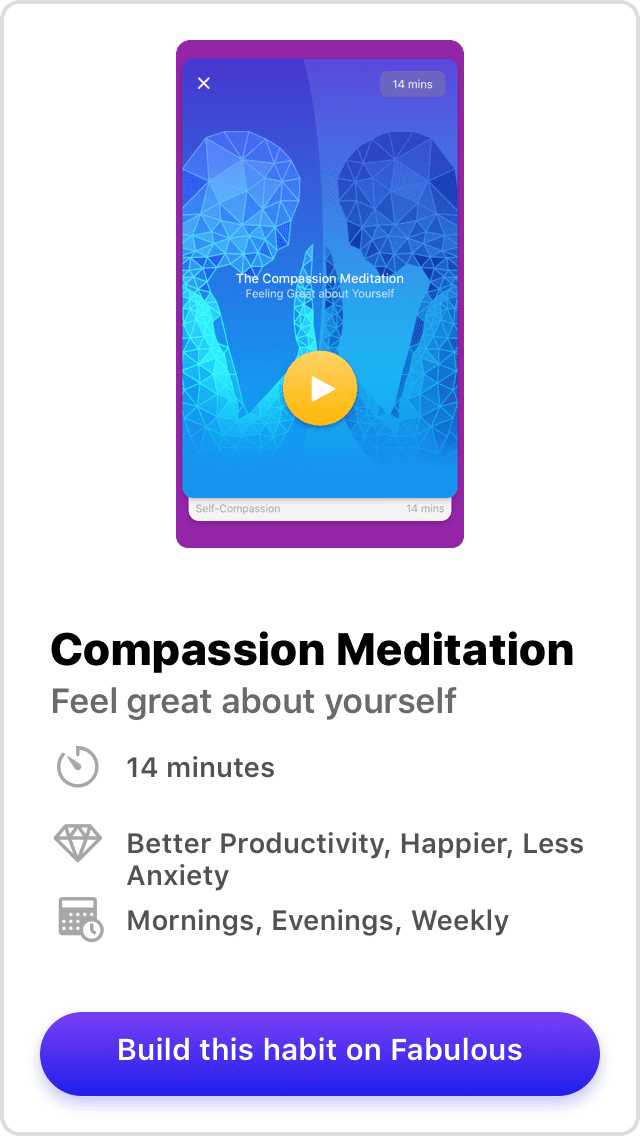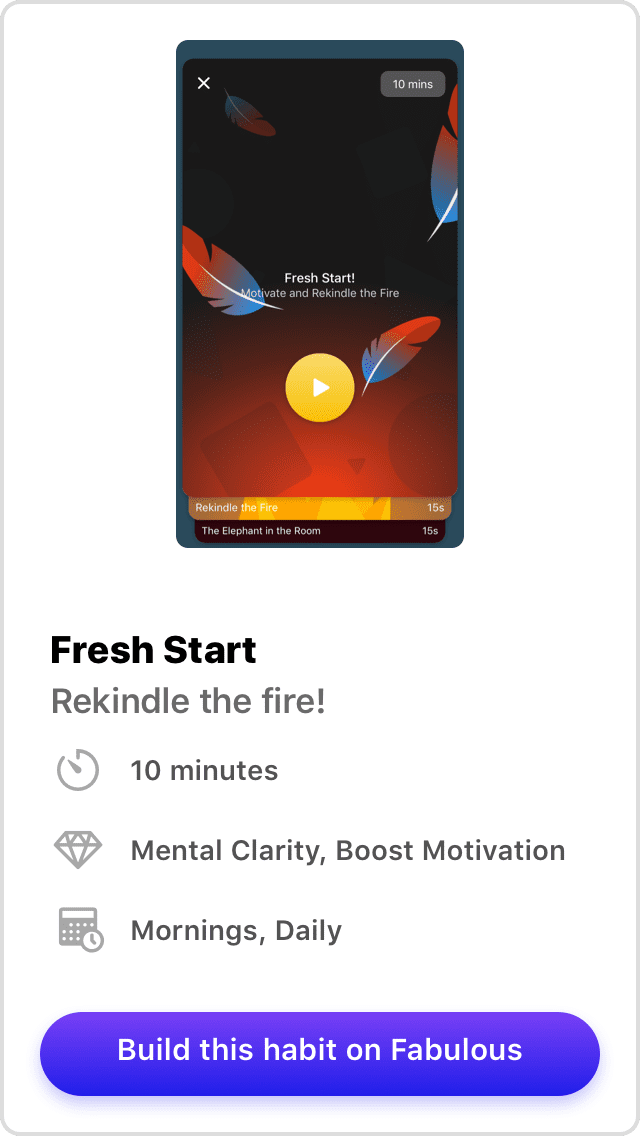Positive psychology is described as the study of what makes life worth living. It focuses on what brings people joy and how to inject that joy into our everyday lives. Many of the Fabulous habits you learn to incorporate into your life, like expressing gratitude and developing your sense of purpose, are rooted in positive psychology.
An important part of positive psychology is discovering what qualities happy people have, one of which is the topic of Susan David’s book, Emotional Agility. When we’re not emotionally agile, we become easily “hooked” to feelings and behaviors that don’t serve us. Have you ever done something embarrassing and couldn’t let the feeling of shame go, even well after the event was over? That’s being hooked.
By unhooking yourself from these things that don’t serve you, you can start freeing up your mental energy for the things that do matter. You’ll also find yourself more in control of your emotions, instead of letting your emotions control you.
If you want to test the science behind the psychology for yourself, start with the Fabulous daily gratitude challenge and see how it can help unhook you from the negative mental energy taking up space
What Is Emotional Agility?
David describes emotional agility as being aware of your thoughts and feelings and accepting them, even the uncomfortable ones. It also means being able to go beyond your knee-jerk reactions and approaching problems in a clear-headed way.
In other words, being emotionally agile involves using your emotions as a tool or a guide, rather than letting your emotions use you. You are not your emotions, David explains, but rather a being altogether separate from them. When you grant yourself this independence from your feelings, you can take a more objective approach to them, and learn to process emotions in a healthier way.
Once you manage that, life’s difficult moments begin to feel more manageable. You’re able to go beyond just surviving through life and instead achieve what David calls “Thriving.” When your emotions aren’t ruling your life, you begin to rule your life. You get to decide what matters to you and what you’re better off without.
But how is emotional agility developed?
How to Gain Emotional Agility
David lays out a plan to take you from “Hooked” to “Thriving” in just four steps.
Show up to Your Emotions, Even the Uncomfortable Ones
Unpleasant feelings are… well, unpleasant. And when you feel them, you probably deal with them in one of two ways: You either bottle them up or you brood on them. Both of these coping skills, David warns, are unhelpful. Bottling your feelings leaves you susceptible to emotional outbursts, while brooding only serves to make you and the people around you more miserable.
Instead, David says to tackle your feelings head-on. Even negative feelings, she writes, can have positive consequences when examined under the right lens. Instead of shaming yourself for feeling depressed, for example, you can pinpoint a source of your depression and work on remedying it. Approaching your feelings with curiosity, rather than fear, can make a huge difference in your stress levels.
Step out of Your Feelings to Gain Perspective
When we’re wrapped up in our feelings it can be next to impossible to make objective decisions. Anyone who’s ever inhaled a pint of Ben and Jerry’s after a breakup or rejection knows this all too well. Strong emotions consume your mental capacity. They make it hard to think straight. So, your brain takes mental shortcuts and retreats to the familiar, even if it’s bad for you.
But you are not your feelings. You are just the person experiencing them. And separating yourself from your emotions is a major part of emotional agility. You can’t make thoughtful decisions on how to deal with your emotions if you can’t step away from them first.
Meditation is one of many ways to practice noticing your emotions without judgement. The Fabulous Compassion Meditation can teach you exactly this by guiding you to let your emotions surface so you can understand where they’re coming from.
Walk Your Why by Setting Goals You Value
Think about the goals you’ve set for yourself. Maybe you’re trying to lose some weight or get a better-paying job. But have you ever stopped to think if you truly want the goals you’ve set for yourself? What if you’re only setting goals you think you should be setting?
People like following the will of the group. When you see other people doing something, like CrossFit or hot yoga, it makes you more willing and inclined to do it, too. Behavioral scientists call this behavioral contagion. Once you’ve been exposed to a behavior, you start to mirror that behavior, which then spreads it to the people watching you.
Following the crowd is easy but not always in your best interest. It’s like your mom always said: Would you jump off a bridge just because all your friends are doing it? Hopefully not!
But how do you figure out what is in your best interest? David explains that we can better understand what we want by clarifying our values. Once you understand what truly matters to you–be it your health, your finances, or spending time with loved ones–you can start setting goals and acting in ways that track with your values. When you do that, you’ll find yourself more self-confident and comfortable making decisions.
Move on With Small Tweaks to Your Lifestyle
David’s final step toward emotional agility is to make small changes, or “tweaks,” to your mindset and habits so that they align with your core values. One way to do this is to adopt a growth mindset. By believing that you can enact positive change in your life, you give yourself the space and opportunity to do so. When you have a fixed mindset, you believe everything is immutable, including your own bad habits. Fabulous has a wealth of user success stories that prove a fixed mindset doesn’t reflect reality.
Another important tweak is to constantly challenge yourself. It may be unpleasant, but stepping out of your comfort zone is how growth happens. The idea is to strike a balance between competence and challenge so you’re never bored or overwhelmed. In other words, you need to find your flow.
If you’re not sure where to begin to challenge yourself, try the Fabulous Fresh Start training to to find your motivation and rekindle the fire within.
Emotional agility can be difficult to develop if you’re starting from nothing. However, like any other large-scale change, it absolutely can be done if broken down into small, digestible steps. This is exactly how Fabulous models its journeys. You may start with just a simple glass of water in the morning but, with gentle pushes, those small habits snowball into sweeping changes that can last a lifetime.






